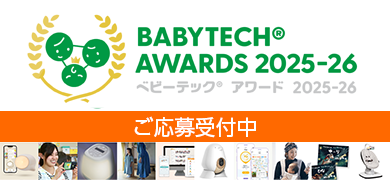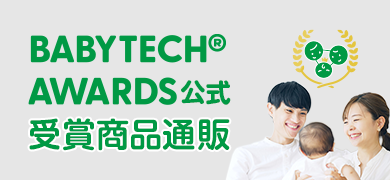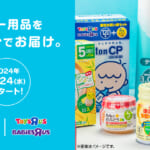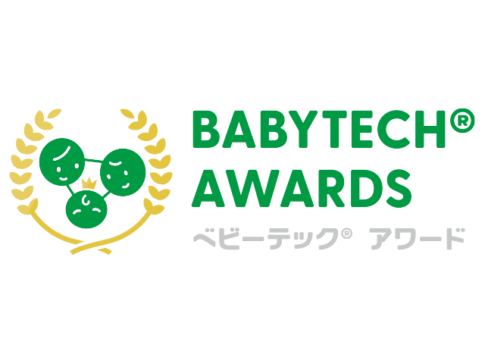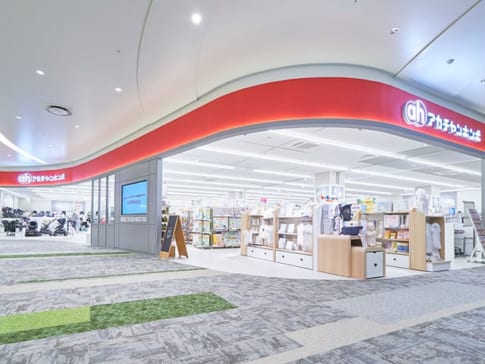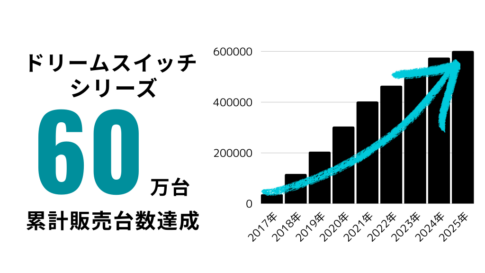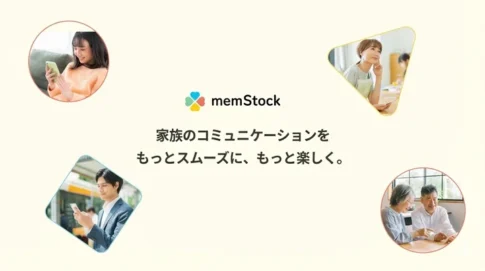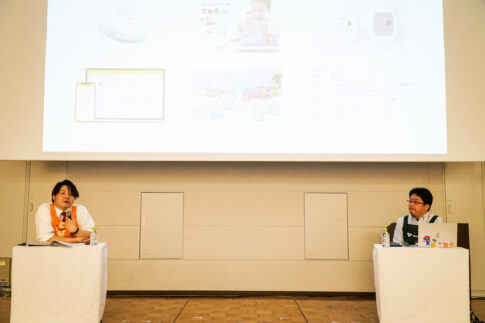- The following is content from the press release -
As the weather gradually warms up, laundry increases. Many of you will be concerned not only about the amount of laundry, but also about the stains and odors, and will be doing laundry more frequently during the sweaty season. Also, many people may have more laundry to do due to environmental changes during the new life season, such as the entrance of children into school. Panasonic Corporation has conducted a survey on laundry among 1126 men and women in their 20s to 50s who live with their children. In addition, Taipa Household Professionals will present information on the latest laundry appliances.

- Conducted a survey on laundry for households with childrenOne in four child-rearing households do laundry twice a day or more, 70% say they are drying clothes indoors more often, 62% say they spend more time doing laundry than other household chores, and 90% have had to redo laundry... 9% say they do it often and 50% say they do it sometimes.
- A professional Taipa household chore specialist explains how to solve the problem of laundry, which 62% finds "time-consuming," with Taipa appliances.
- Clothes dryer/dehumidifier F-YEX120B, which solves the problem of drying clothes indoors, goes on sale on May 30(*)!
One in four families with children do laundry "more than twice a day.
70% of respondents said that they dry their clothes indoors more often nowadays.
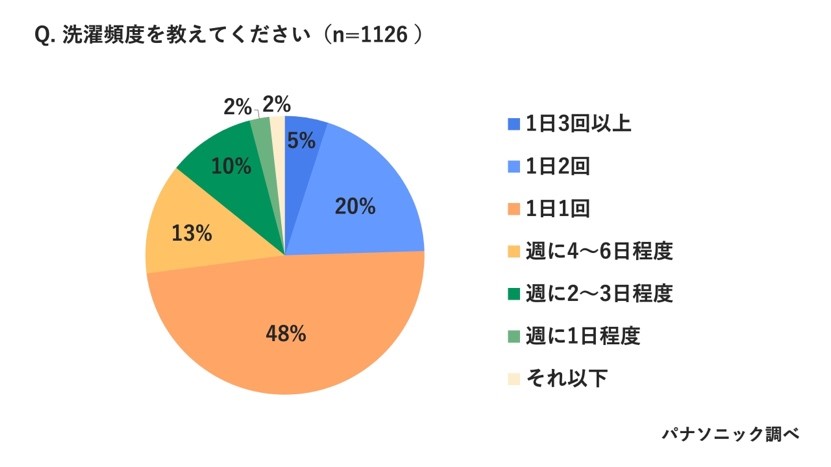
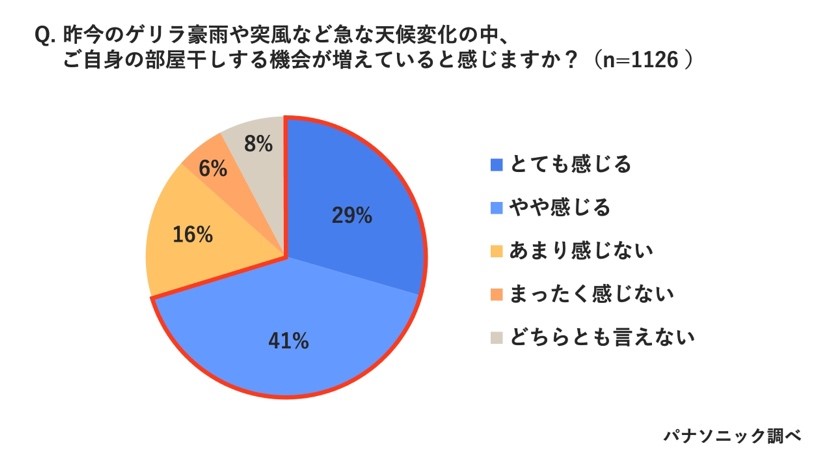
When asked about the frequency of laundry in their households, 20% responded, "Twice a day. Some (5%) do laundry three or more times a day, indicating that one in four people do laundry at least twice a day. Adding the 48% who do laundry "once a day," 73% of respondents do laundry every day.
Next, regarding the method of drying laundry, 70% of respondents answered that they are drying their clothes indoors more often due to sudden weather changes such as recent guerrilla downpours and gusty winds.
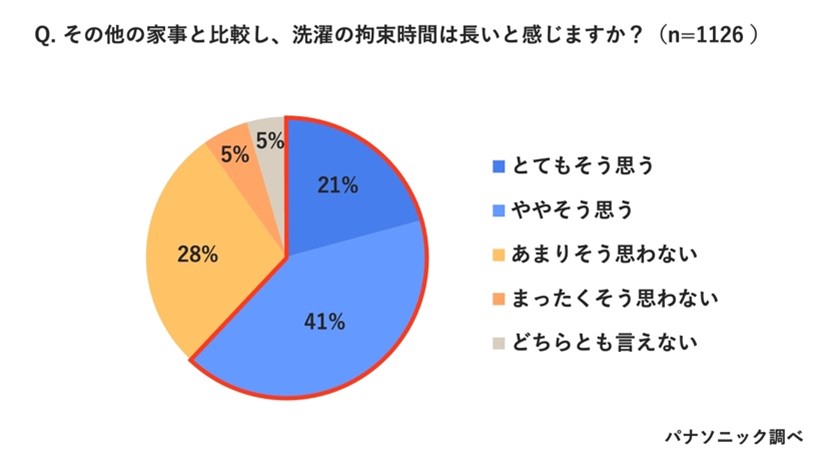
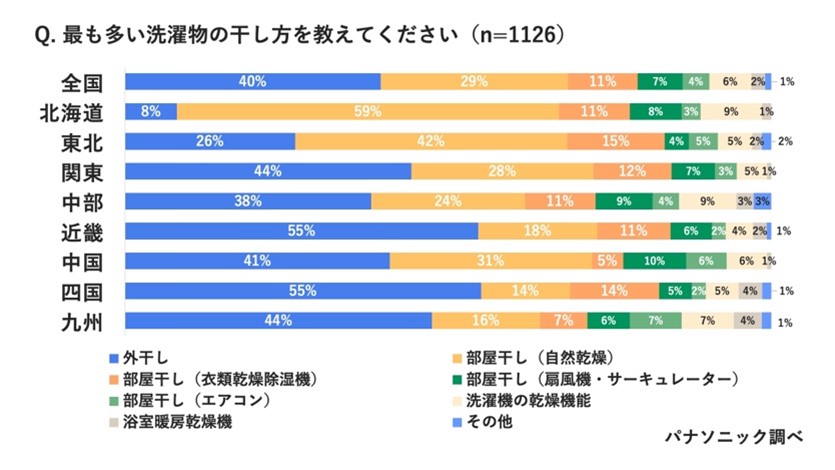
When asked, "Compared to other household chores, do you feel that laundry is time-consuming?" (21%) and "somewhat agree" (41%), indicating that 62% of respondents feel that laundry is one of the most time-consuming household chores.
Drying is the most time-consuming part of the laundry process. The top three most common methods of drying laundry on a national average were "outside drying" (40%), "room drying (natural drying)" (29%), and "room drying (clothes dryer/dehumidifier)" (11%). By region, however, "outside drying" is much lower than the national average, at 8% in Hokkaido and 26% in the Tohoku region, while 55% in the Kinki and Shikoku regions. The percentage of respondents who "dry outside" is lower in areas where it snows, indicating that regional characteristics are strongly reflected in the way laundry is hung out to dry.


As evidenced by the increase in room-drying, the disadvantage of drying outside is that it is dependent on the weather and time of day. Due to recent sudden weather changes, as many as 83% of respondents said that they worry about the laundry they are drying while at work or out and about. With the high rate of outside drying, it can be said that the mentally restraining time spent worrying about laundry while at work or out of the house, combined with the physically restraining time, leads to the length of time spent doing laundry.

On the other hand, while not dependent on weather or time of day, the top 3 problems with drying clothes indoors were "takes time to dry" (56%), "smell of clothes drying indoors" (53%), and "gets in the way indoors" (42%).
Perhaps due in part to this room-drying odor, 90% of the respondents have had to redo laundry, with half of them saying that they do it occasionally and 9% saying that they do it frequently.
The survey shows that while 62% of respondents believe that laundry is one of the most time-consuming household chores, 73% of child-rearing families do laundry every day, and more often than not, they dry their clothes indoors.
Laundry is a frequent and time-consuming task that many people have to redo. In this issue, "Taipa Housekeeping Professional" Kikuno Yano explains the Taipa appliances that solve the problems of laundry.
Taipa Household Professionals Explain
62% of respondents felt that laundry was time-consuming, and the problem was solved with Taipa appliances!
*This is an edited version of comments received from Panasonic with a request from "Taipa Housework Pro" Kikuno Yano.
Is laundry a time-consuming chore? Why is it so...
First, when drying outside, depending on where you live, it may be difficult and time-consuming to move the laundry from the washing machine to the balcony or other drying area. Also, drying laundry outside depends on the weather and time of day, and as the above survey results show, there is a lot of stressful time spent worrying about laundry left out to dry while you are at work or out and about.
In other words, the "time spent worrying about laundry" ≒ "time restrained by laundry" by drying outside is surprisingly long.
On the other hand, drying clothes indoors reduces restrictions on weather and time of day, but creates problems unique to room-drying, such as difficulty in drying and room-drying odors. In addition, as the survey results show, many people do not like the idea of having laundry dried indoors because it gets in the way indoors and does not look good. The longer laundry is dried indoors, the longer this condition persists, so many people would like to shorten the drying time indoors in order to solve these problems.
There is also the risk of having to re-do the laundry, whether it is dried outside or room-dried. For example, if the laundry gets soaked by sudden rain while drying outside, or if it smells fresh when drying in a room, it will need to be rewashed if the drying process fails. If this happens, it will take even more time and the "time-to-market" (the level of satisfaction and effectiveness for the time spent) will deteriorate.
Background of the increase in room drying
During the rainy season and autumn rains, more and more people dry their laundry indoors. Recently, more and more people are constantly drying their laundry indoors, not only on rainy days, but also due to PM2.5, pollen, yellow sand, and other factors. In addition, some condominium regulations stipulate that drying clothes on balconies is not allowed, and some high-rise condominiums do not have balconies.
Taipa professionals recommend! Laundry dried in room x clothes dryer dehumidifier recommended!
In order to do laundry with a good typer, Laundry should be dried indoors x clothes dryer dehumidifier is recommended. It is.
The clothes-drying dehumidifier eliminates the disadvantages of drying clothes outside that many people feel, such as "depends on the weather and time of day," and "PM2.5, pollen, and yellow sand stick to the clothes," while simultaneously eliminating the disadvantages of drying clothes indoors, such as "takes time" and "produces a room-drying odor.
Many people have heard of clothes dryer dehumidifiers, but are not sure what exactly they can do. Here are some key points about clothes dryer dehumidifiers.
- Easy to use, no installation required, and fast drying speed
Clothes dryer dehumidifiers can be easily installed with no installation required. In addition, it is generally believed that if moisture is left in clothes for more than 5 hours, bacteria growth will increase and a room-drying odor will occur. In addition to dehumidifying the moisture contained in the air, a clothes dryer/dehumidifier also blows air to promote moisture movement, thereby improving drying speed compared to natural drying.
It is also recommended for those who find it difficult to carry heavy, damp laundry back and forth between the washing machine and balcony to dry outside. Another advantage of room-drying is that it allows you to complete laundry inside the house, making it a minimalist and compact way to do laundry. - Appliances that can be used throughout the year as well as in the rainy season
When you hear of a clothes-drying dehumidifier, you may have the image of a seasonal appliance that is used during the rainy season. However, it is a typa home appliance that plays an active role in daily laundry by drying clothes faster than natural drying indoors. - A large amount of laundry can be dried at one time
As one in four respondents in the survey said they do laundry "more than twice a day," families raising children have a particularly large amount of laundry to do. Clothes dryer/dehumidifiers can dry a large amount of laundry quickly by delivering airflow to the edges of the laundry. For example, it is useful for frequently used laundry related to children's school or club activities, such as "I want to dry it quickly because it will be used again tomorrow. It is also recommended for frequent washing of clothes, such as separate washing using children's detergent.
Another key point is that it can be used to dry fashionable clothes, etc., as it dehumidifies rather than dries them at high temperatures. - Not only for drying laundry, but also for preventing condensation and moisture throughout the house.
The advantage of a clothes dryer dehumidifier is that it can be moved around and used to dehumidify closets, under kitchen sinks, and shoe boxes, making it a cost-effective product that can be used to dehumidify an entire house with a single unit.
Recently, an increasing number of houses have installed a clothes-drying bar in the area where the washing machine is placed as a laundry room, so a clothes-drying dehumidifier can be easily installed in such an area without any construction work.
For these reasons, a clothes-drying dehumidifier is a typer appliance that eliminates the disadvantages of both drying clothes outside and drying them indoors in time-consuming laundry.

Taipa Housekeeping Professionals Kikuno Yano
As a housework advisor and money-saving advisor, she works on TV, lectures, and writes a series of articles focusing on housework efficiency and SDGs that can be done at home.
He also gives advice on shortening housework time and senior household chores, and also gives lectures on home preparedness as a "disaster prevention specialist" and on reducing food loss as a qualified "nutrition education instructor".
Author of The Simple Life Savings List (Kodansha) and other books.
New "eco hybrid" method reduces power consumption to about 1/3*1
Launched the F-YEX120B clothes dryer/dehumidifier on May 30(*)!
Panasonic Corporation has adopted the new "Eco-Hybrid" system, which consumes about 1/3 of electricity.★1On May 30, 2024(*), we will release the F-YEX120B, a clothes dryer/dehumidifier that achieves the following
This product employs a new "eco-hybrid" system that combines a compressor system and an air-cooled dehumidification system. The condensation mechanism dehumidifies moisture in the air twice, and the cold air that passes through the cooler is also effectively utilized to reduce power consumption by about 1/3.★1The new system is designed to be used for a long period of time. Furthermore, in response to needs such as "dumping water out of the tank after use is a hassle" and "long hours of continuous use to prevent mold in the bathroom, etc.," a hose can be connected to thenote 1Supports "continuous drainage" for draining water. Sterilizes room-dried clothes★2Suppresses room-drying odors*2It is also equipped with nanoe-X (48 trillion), which
Our clothes-drying dehumidifiers employing the "Eco-Hybrid" method eliminate the problem of drying clothes indoors and offer a comfortable and clean lifestyle.
*1: Comparison of power consumption between F-YEX120B and our conventional product F-YHVX120 (based on JIS standards). However, drying time is longer.*3
*2: Effect after about 7 hours in a space of about 6 tatami mats.*4
Product Site
URL:. https://panasonic.jp/joshitsu/products/F-YEX120B.html
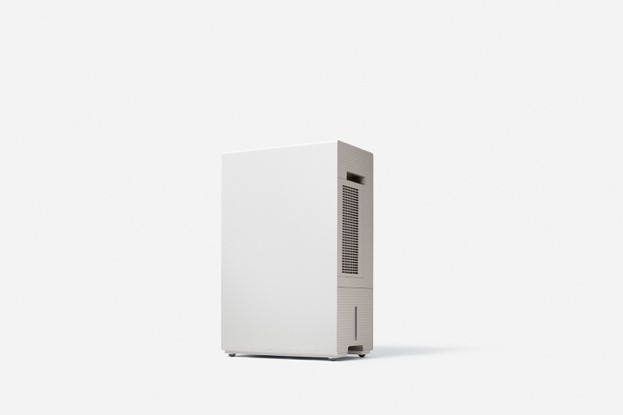
Special Features
- New "eco-hybrid" method reduces power consumption to about 1/3 ★1 https://youtu.be/jZ9guYmSqYk
- Continuous dehumidification for long periods of time without the need for drainage.
- New design, body form and color that blends in with the living space
*1: A commercially available hose (inner diameter 15 mm) is required.
2: [Testing organization] Omi Odo Air Service Co. Three males in their 40s~50s were tested using a brand-new bath towel, and "use after bath → wash and dehydrate → nanoe and clothes drying operation" was repeated 10 times. Another new bath towel was used for 10 repetitions of "use after bath→wash and dehydrate→natural drying". Methods for controlling room-drying odor: nanoe emission and clothes-drying operation (clothes-drying and quick-drying mode) [Subject: Clothes after washing [Test results] Nanoe and clothes-drying 0.81, natural drying 1.5 No. 09-0731.
*3: Power consumption for dehumidification of 12.5L/day according to JIS standards, comparison between F-YEX120B (225W) and our conventional product F-YHVX120 (715W). Clothes drying performance〉 Energy consumption and drying time under JEMA voluntary standards [JEMA-HD090:2017] (60Hz 20°C, approx. 2 kg of clothes), compared with F-YEX120B (312Wh, approx. 90 minutes) and our conventional product F-YHVX120 (885Wh, approx. 75 minutes). Drying time in actual use varies depending on the installation environment, type and amount of clothes, and drying method.
Test Method] Measured the number of bacteria on cloth at a distance of 40 cm from the air outlet in a 6-mat laboratory [Sterilization Method] Nanoe emission and clothes drying operation (clothes drying, low noise mode) [Subject] Bacteria on cloth [Test Results] Inhibited more than 99% in 7 hours Test results] Inhibition of 99% or more in 7 hours
*There is a possibility that the launch may be postponed or supply may be delayed due to the effects of the new coronavirus infection. The release date will be posted on our website as soon as it is confirmed.
Outline of the "2024 Survey on the Actual Conditions of Laundry in Households Raising Children" (Japanese only)
Survey area: Nationwide
Survey period: Friday, April 5, 2024 - Wednesday, April 10, 2024
Survey method: Internet survey (in cooperation with JustSystems)
Survey targets: Men and women in their 20s to 50s who live with their children and do their own laundry.
Valid responses: 1126 (male: 571, female: 555)
*When citing survey results, please include the following information According to Panasonic as the source of the citation.

